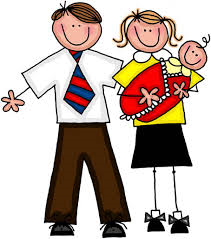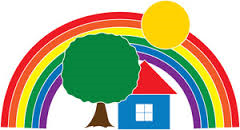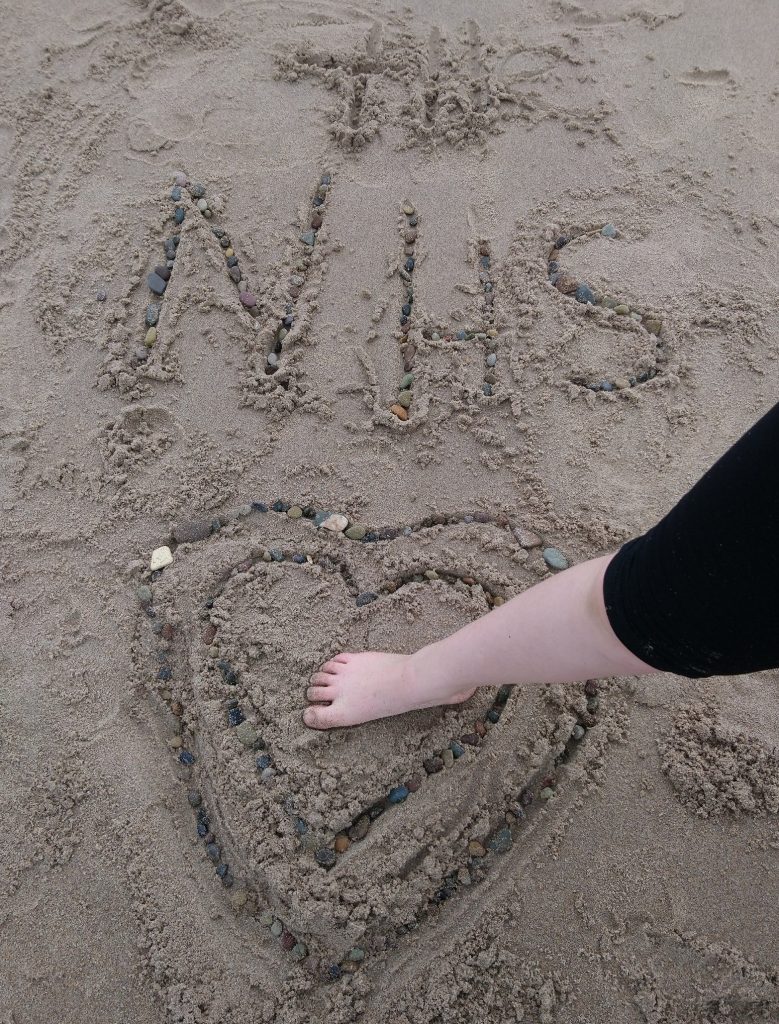A lockdown story, by Anselma Gallinat.

This cluster concerns the ways in which imaginations/views of the past interlink with visions, hopes or fears for the future. My own work has looked at how the history of difficult time periods is written, told, performed to support national identity and how it interlinks or challenges individual recollections and senses of self. I tend to do so through a focus on narrative and have usually collected life stories as part of my ethnographies.
While I have read and used Jerome Bruner, Charlotte Linde, Elinor Ochs and Lisa Capps, and have used quotes like ‘identity is a life story’ McAdams (1993), as a postgraduate student especially I often found some of this literature problematic. It seemed to imply that we fashion our stories rather consciously to ‘manipulate’ others (Fernandez and Carrithers [and, yes, Gallinat] call it ‘persuasion’), and I felt much of this narrative work, at least on the individual and social level was undirected, unconscious, sort of emerging organically. Later I considered it as the – at best – semi-conscious outcome of social interaction (2016). I continue to see narrative, story-seeds, discourse and metaphor as not only consisting of text language, but also performances, symbols, embodiment.
However, if I am critical of word-heavy constructed stories, what am I doing sitting here ‘writing’ and illustrating (yes, with pictures) my nine-year–old daughter’s ‘life story book’…? So this blog reflects on why I felt the need to rework her life story book, some of the ways in which I have done so, in their relation to childhood trauma in adoption. Whilst K’s life story book is the peg, on which I hang these reflections, this blog doesn’t tell ‘her story’. It tells a story of my writing an immensely important text.
The Life Story Book
In adoption, the LSB, a folder with printed A4 pages, is used to tell a child where they have come from – how they have come to live with their ‘new’ or ‘forever’ or ‘adoptive’ family. It provides information on their parents and siblings, if any. So if I, as K’s adoptive mother, write this story, about her birth family, it surely cannot get any closer to trying to engineer an identity, can it?
To understand this, we need to backtrack a little. In British adoption, children should be told about their birth origins. To this end, within 10 days of the adoption being fully legalised (granting of adoption order) a life story book is provided to help parents tell their child where they came from in a child friendly way. At this point, in many cases adopted children no longer have direct contact with their birth family, especially the parents. Contact is usually continued only by letter mediated by social services. Much of these practices seem to work ok for children who are very small when they were moved into care.
A little more backtracking. Most looked after children are in care because of neglect, broadly speaking. Neglect from womb through to baby and toddler stages impacts on brain development – usually talked about as ‘developmental trauma’ or ‘developmental delay’. One consequence of this is that those children, who experienced life in their first home, only have very fragmented memories that lack language and are dominated by sensory impressions – the way a situation feels, smells, sounds like, including how the body feels in that situation (in pain, cold, hungry, dry, itchy).
What kind of a story is this?
In these cases the LSB has to tell the story of the early years in a way that allows the child to order those sensory, felt, non-narrative memories. It has to tell the story in a way that makes clear to the reader that this home wasn’t safe and won’t ever be safe, however much the parents loved their children, no matter trips to the park, the beach and MacDonald’s. This is one important purpose. The second is to help these children develop a sense of identity – a ‘habitable identity’, as Vieda Skultans put it for sufferers of severe trauma in Soviet-occupied Latvia – as part of both birth and adoptive family (and for the anthropologists: in a cultural context of the primacy of biological descent).
So I am sitting here ordering pictures (better pictures) into the LSB, adjusting the text, and taking out an awful lot of cheerful clipart! Like the almost stick figure couple – the man with tie, the women with skirt carrying a baby, smiling broadly – a ‘family’! It doesn’t get more heteronormative, garishly coloured than that. This picture and that of a house framed by a rainbow are moreover inappropriately suggestive of the ‘happy ever after’ that stands in great contrast to the tough grind wrought through with loss, screams, spit and tears that adoption is for most – children and (adoptive and birth) parents alike.


I replace both images with a tree in the shape of a heart – calm colours, less directive.
Instead of clip art of a funny little butcher, a chef and a prominent fast food chain – colourful pictures that apparently engage children’s attention – I use plain text to explain where birth parents have worked, and add that they were also out of work. This of course still doesn’t explain why the children were taken into care. Being jobless, poor, or poorly trained is no crime. I add text about criminal convictions, where they existed, indicate brushes with the law, saying factually but in a few words the reasons for this; in child-friendly language (‘xx was often in trouble’) but clear nonetheless. This matters, it matters a very great deal.
Embodied memory
As Oakwater argues, if we narratively ‘bubble wrap’ our children (2012) telling them their home was a ‘bit messy at times’ and then later request they tidy their bedroom because it is ‘a bit messy’ too, our children will not understand that their first home was an unsafe place to be. We need to be clear that it was dirty, chaotic and had a bad smell. So they can place sensory memories of awful smells or understand their own involuntary reactions when certain noises send them into an emotional spin.1 But also to create a contrast to the new, safer home. To be clear, this is not about demonising anyone. Good days and ‘treats’ in the first home are also displayed, including in pictures. Maybe the hardest part of the LSB is that it has to teach children about complexity – the good wrought through with the bad and the very much in-between.
I make photographs smaller, especially of the birth parents, and I pare down the great number of happy smiley pictures from the last time K met her parents, when they all had to say good bye to each other – a clearly terribly sad moment despite the smiles and tiny birthday cake. I remove mention of ‘wonderful presents’ that had been exchanged. Much of this is due to Ingrid – adoption specialist, child therapist and general lifeline. Large pictures of birth family become very intense for the children. They unsuspectingly turn a page and wow, there are MUM and DAD! Back in force! So pictures are smaller; and I try to mix several to reduce intensity of just one image that displays K, her family or us – frozen in time. Regarding the ‘good bye contact’ I pick only one picture, making it smaller, and add a sentence that this is ‘another difficult part of the story’.
So I engineer my daughter’s life story sand her identity. Do I? That’s not the goal, says my gut.
The text was first written by the relevant person in social services. Ingrid was never happy with it, nor was I. I’m reworking it, and Ingrid will check on what I’ve done and amend as need be. I combine my interest in writing for specific audiences, my enjoyment of making a page visually attractive (yes, actually, although some people are much better at it than I am), my understanding of the needs of adopted children and my daughter, with my academic ‘gut feeling’. Veena Das has recently argued that however much we may wish to believe that our academic work springs from pure intellectual thought and reason, concepts actually arise from experience and emotion. We have a gut feeling for which concept seems best, or is really quite incorrect, and then look for literature, theory, arguments to build that point. I know in my gut that I need to write K’s story better, photos, clip art and all, in order to allow her to keep growing through understanding herself.
For the future
I am not writing a coherent story of her either. The ‘texts’ have narrative quality, but key is to provide information, knowledge – of the family, her birth, her first home – to enable K to start putting her memories into her own words, and to create her own narrative/s. I am not expecting and I don’t want to shape her reflection into the production of one ‘rescue narrative’ akin to the stories patients or recovering drug addicts are institutionalised into (Holstein and Gubrium). Rather, I want to aid her thinking. I hope she will use the story as impetus, ‘story seeds’ that do not, as in Carrithers (2012), indicate an already known longer story, but seeds that spark potential stories in K’s own mind. Nuggets of information that allow her to sift through her memories, put words to them, take on board, reject, rewind, and that way learn who she is or feels she is, then and now. Also to learn the good, the bad and the in-between. To learn about love and loss and families, of all sizes.
So I am writing about this past to enable K to know herself better in time and open up new potential futures for herself!

Notes
1 See Van der Kolk (2015) The body keeps the score on embodied, word-less, trauma memory and its everyday impact.
References
Bruner, Jerome. 1987. “Life as Narrative,” Social Research 54(1): 11–32.
———. 1990. Acts of Meaning. Cambridge, MA: Harvard University Press.
———. 1991. “The Narrative Construction of Reality,” Critical Inquiry 18: 1–21.
Carrithers, Michael. 2005. “Why Anthropologists Should Study Rhetoric,” Journal of the Royal Anthropological Institute 11(3): 577–83.
–. 2012. “Story-Seeds and the Inchoate,” in M. Carrithers (ed.), Culture, Rhetoric and the Vicissitudes of Life. New York and Oxford: Berghahn Books.
Das, Veena. 2018. ‘The life of concepts and how they speak to experience,’ in Morten Nielsen and Nigel Rapport, The Composition of Anthropology, London: Routledge.
Fernandez, James W. 1986. Persuasions and Performances: The Play of Tropes in Culture. Bloomington: Indiana University Press.
Gallinat, Anselma. 2016. Narratives in the making: Writing the East German past in the democratic present. New York: Berghahn.
Holstein, Jaber F., and James Gubrium. (eds.). 2001. Institutional Selves: Troubled Identities in a Postmodern World. Oxford: Oxford University Press.
Linde, Charlotte. 1993. Life Stories: The Creation of Coherence. Oxford: Oxford University Press.
McAdams, Dan P. 1993. The stories we live by: personal myths and the making of the self. New York and London: The Guilford Press.
Oakwater, Helen. 2012. Bubble wrapped children. MX publishing.Ochs, Elinor, and Lisa Capps. 2001. Living Narrative: Creating Lives in Everyday Storytelling. Cambridge, MA: Harvard University Press.
Skultans, Vieda. 1998. The Testimony of Lives: Narrative and Memory in Post-Soviet Latvia. London: Routledge.
